
Capital:
Santiago
Currency
Peso
Best time to visit:
Measuring 4,300 km from north to south, Chile has very different climates. Take advantage of the beautiful Chilean summer (December to February) to explore naturalistic sites such as Torres del Paine National Park, which are inaccessible in winter. In spring and autumn you can visit the center of the country, including the Lake District.
In a word:
Ah que rico (cool)
Vaccines
None
Warnings:
- Along some beaches the sea is very rough due to strong currents. Don't ignore the warning signs.
At the table:
Chilean cuisine tends to be a little spicy, especially the sauces that usually accompany the dishes. Fish and seafood make up the lion's share of the menu.
Essential experiences:
Excursion from Punta Arenas to Isla Magdalena to observe the colonies of penguins; Trekking in the Torres del Paine National Park and, for the lucky ones, exploration of Easter Island (but that's another story)

Chile is a very long strip of land narrow between the Pacific Ocean and the Andes mountain range and due to its particular conformation, it has extremely different landscapes and territories: rugged and rocky mountains, green and luxuriant plains, sparkling glaciers, woods and intricate forests with 7 different climates; proving to be a one-of-a-kind destination for extraordinary journeys.
The attractions for lovers of wild nature are innumerable and will satisfy even the most demanding naturalists: the Torres del Paine National Park, where you can admire majestic glaciers and tackle adventurous treks, the great Patagonian lakes region, the Aysen region with the legendary Carrettera Austral and several national parks and nature reserves, the Gran Salar de Atacama, the driest desert in the world dotted with lagoons and the Cordillera del Sale with the suggestive valleys of Death and the Moon.
The legendary Easter Island is also inexplicable, shrouded in the millennial mystery of Moai and volcanoes, the destination of an itinerary created specifically for those who cannot resist the charm of Rapa Nui, but unfortunately we have not yet been able to visit.
How did we organize this trip?
We started from San Carlos de Bariloche, Argentina, hired a van and headed slowly to the southern hemisphere.
In the more than 4000 km, which led us to Usuhaia through the Carretera Austral and the Ruta 40, you can fully savor the idea of 'travel'.
It is a very intense journey where you have to study the itinerary carefully.
A fascinating journey from north to south dedicated to the great spaces of Patagonia, to its magnificent National Parks up to the crossing of the Strait of Magellan.
Pablo Neruda wrote "Whoever does not know the Chilean forest does not know this planet", this phrase sums up the soul of Chile, a country capable of leaving a deep trace in the heart of those who visit it.
Our suggested itinerary (19 days) | |
five days: | Puerto Varas (visit Lake Llanquihue), Puerto Montt (climbing Osorno Volcano), Saltos Rio Petrohue |
four days: | Chiloè Island (visit Castro, Quellon) |
three days: | Coyhaique, Chaiten |
one week: | Puerto Natales (Torres del Paine trekking), Punta Arenas, transfer to Ushuaia, Argentina |
After a few days spent in the mountains of the San Carlos de Bariloche area, we cross the border to enter Chile, here, as if by magic, the whole background changes, the Andes seem to move further and further away, the vegetation thins out giving space to an arid and flat monotonous landscape ...
Fortunately, on the shore of Lake Llanquihue and at the foot of the two majestic snow-capped volcanoes, the town of Puerto Varas welcomes us.



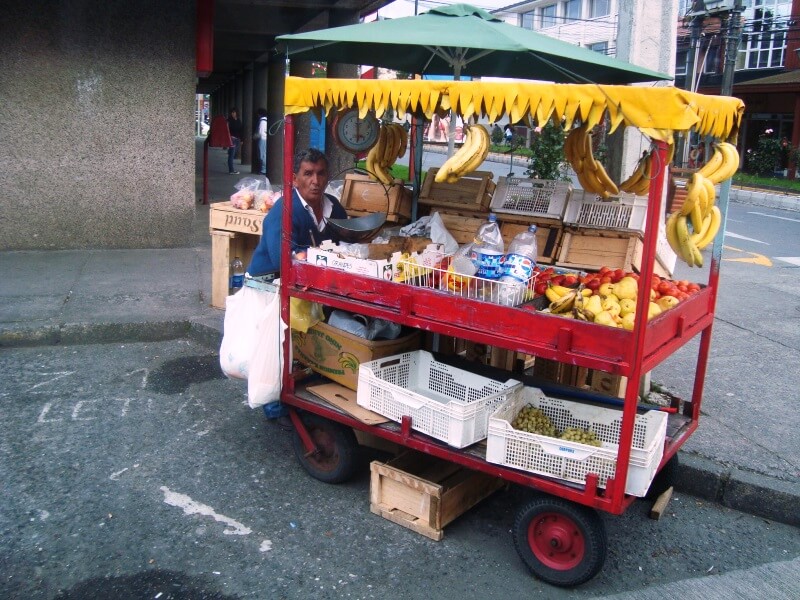


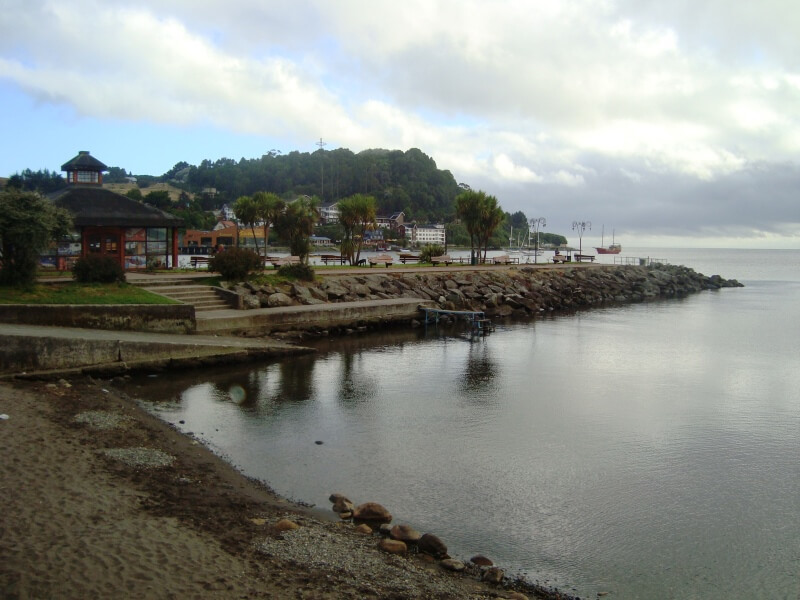
Today we go up to the Osorno volcano, no fear: comfortably seated on the chairlift; climbing up, higher and higher, beyond the clouds, indeed penetrating into their depths to leave them below us ...
Then the silence, the peace broken only by a few jokes exchanged between us ...
We literally burned our faces to see the wonders of the Osorno volcano, but it was worth it. It wasn't a physical climb but a mental one. She literally ascends to heaven. There are a series of dominant colors: the blue of the sky and the sea, the white of the summit and the sepia black of the volcano.
There was a thunderous silence, we were the only human beings to breathe for hundreds of meters ...
A brief stop at Saltos Rio Petrohue as we return to Puerto Varas where we will spend the night.
We arrive in Puerto Montt to board for the island of Chiloè.
Here: feel the exquisite sea breeze and contemplate the immensity of the Pacific sitting in front of the sea.
Savor the delights of the sea in the Angelmó cove, the protagonist of the city, which welcomes you with a table laden with seafood and fish from the area.
Delight your palate in one of the many restaurants, some of which with a view of Tenglo Island and the Calbuco volcano, where everything is freshly prepared: the paila marina (seafood dish), the "cancato" (ragout of fish, chorizo, cheese and tomato) and the unsurpassed sea urchins.

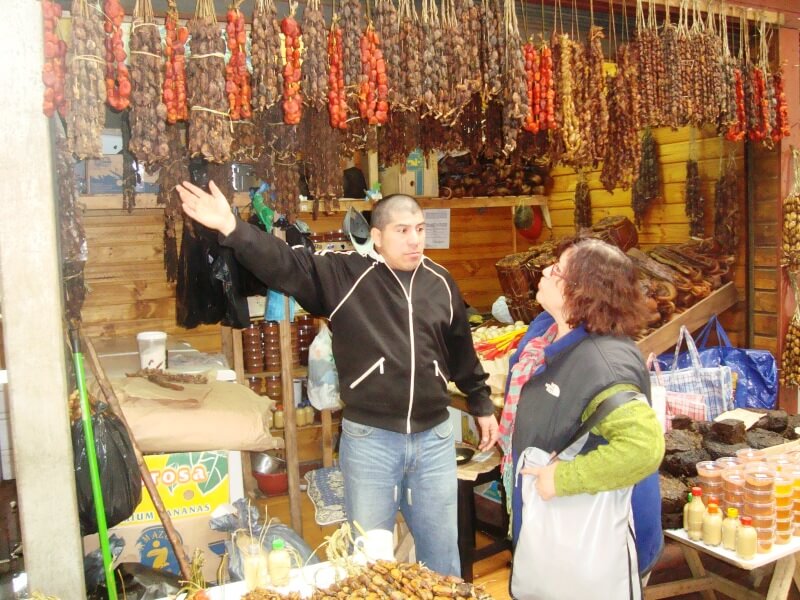



We set sail and spend the whole night sailing to the island of Chiloè.
Land of myths, legends, traditions and unparalleled gastronomy.
Getting to know Chiloé means entering a magical world of surprising cultural and natural richness from the moment you land on Isla Grande for the first time.
Come and discover its picturesque stilt houses, the colorful houses built on the water and let yourself be involved in the company of the chiloti, inhabitants who with their surprising tradition give a unique character to this archipelago.
Discovering the many characteristic wooden churches of the island of Chiloè.
Each village has its own, all very small, simple and colorful. They are delicious and give you just serenity and peace.
Finally the pleasure of a short trek between the woods and the beach ...
How beautiful it is to walk immersed in nature ... to breathe tranquility and tranquility, the smells of trees and plants, the sounds of many animals ...
Once the forest is over, the beach begins, but only after crossing a swampy path full of insects ...
Once we have reached the sand dunes quite tried, last effort: we overcome them ... a spectacle that only nature can offer ...
An endless beach beaten by the waves of the Pacific Ocean ...
I sit on the top of a dune near a bush in the shade of which a dog was resting ...
In the evening we reach Quellon, which as our Lonely Planet says, offers nothing but the comfortable port from where we have just embarked to go south ... more and more south ...
After the long ferry crossing, we land in the ghost town of Chaitèn, a village completely covered in ash after the eruption of the volcano of the same name a few years ago ... signs nailed to the facades of abandoned houses denounce the lack of interest of the government, every world is a country ...
Earthquakes, floods, tsunamis ... but why has nature been so pissed at us lately?
We continue along the mythical "Carretera Austral" a very long dirt road of thousands of kilometers that passes along lakes, fjords, under mountains and wonderful landscapes ...
A short but intense walk gives us another spectacle of nature made, this time, of a glacier, waterfalls and streams ...
After a week spent traveling around Argentina's Patagonia, we are back in Chile!
In Puerto Natales today it is pouring with rain!
The tactical backpack is ready, the desire to conquer our first Chilean peak is great ... Although a bit demoralized by the weather, we decide to leave anyway.
A shy sun encourages us ... We try ...
The route begins immediately uphill, it takes us almost an hour to cover the first 1200 meters, it takes a lot of effort ...
We continue along a very narrow road that overlooks a ravine, without protections and with a strong wind that worries us quite a bit ...
The sound of water beating on the walls of the bottle marks the rhythm of the footsteps ...
We go into a wood, from time to time we cross canals and streams ...
Here is the first refuge ...
We relax a little but leave soon ...
We go up, we go down, we meet people who stayed there the night before ... the clock marks the three hours of walking when we reach a crossroads ...
Straight for 45 minutes of extreme ascent we would have reached the summit; right for 300 meters to the last refuge ...
It starts to rain heavily, the gray clouds are becoming more and more threatening and the impetuous wind literally slaps us ...
We decide to turn right, we prefer not to get sick ... after all we are satisfied all the same.
Sheltered from the wind, we try to recover some energy, drink some water, eat a chocolate bar and run in the opposite direction ...

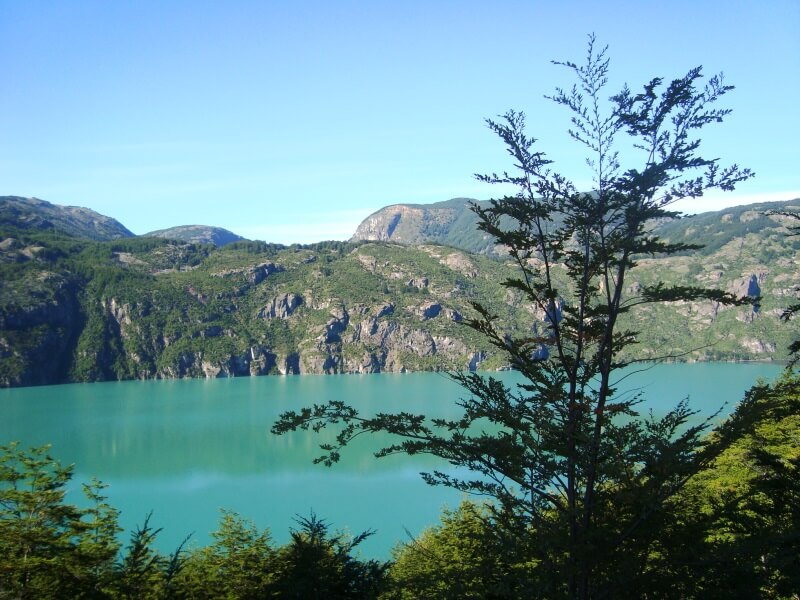


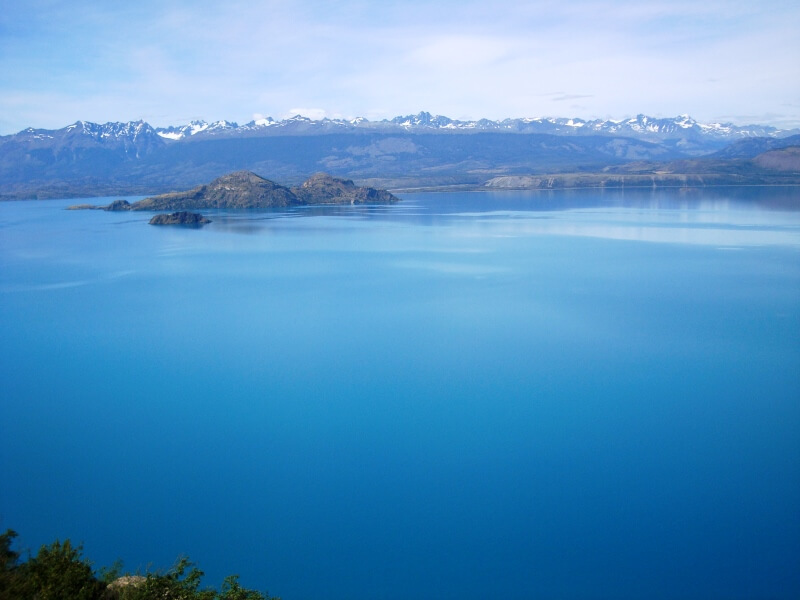










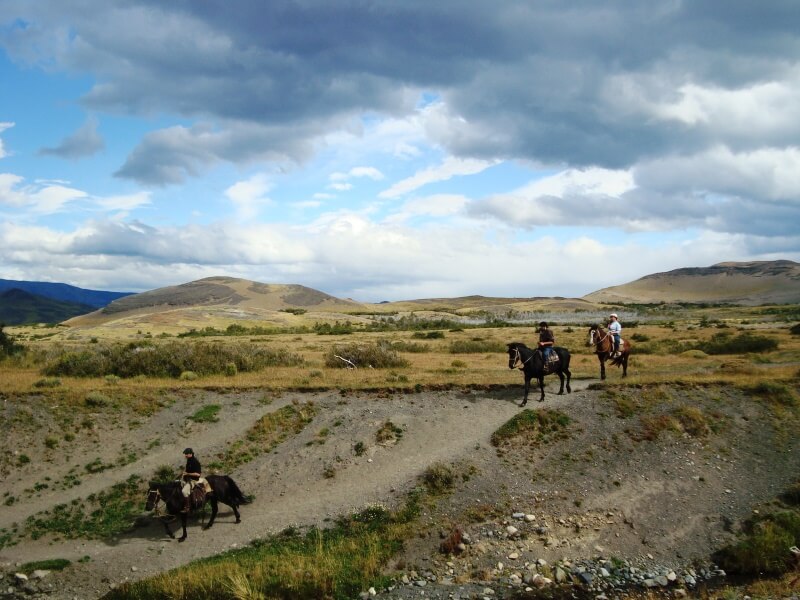
After so much nature, after the green of the woods, the blue of the seas, the mountains and the sky: here we are again surrounded by urban greyness ...
A bit like a fish that is released into the water after a long time, so I felt ... with the desire to run left and right in the city traffic, among the people who went to the office or the kids who with their little uniforms they came out of school ...
After the initial excitement of returning to our natural habitat, after the shopping tour in the central square dominated by a huge statue of the famous navigator Magellan with two Indians, mixed with the American tourists of the cruise ships that stop here, an exquisite empanadas al queso in a kiosk along the main street, and a manzana juice in the old bar "1900" while two pot-bellied carabeneros are photographed posing by the slightly clumsy old American ladies with their digital cameras ...
The Lonely Planet does not suggest anything exciting then on board a collective taxi we decide to visit the "free zone" which, as the old taxi driver explains, was created to favor these poor Chileans who live in the last land: the end of world…
Today we leave Chile definitively, direct, by bus, to Ushuaia, we expect about 12 hours on the road!
We cross the Strait of Magellan with the dolphins that greet us following the wake of our ferry; it is exciting above all because it immediately set my imagination in motion making me imagine the galleons of the old navigators / explorers who landed here a few centuries ago in search of fortune ...
Shortly after we cross the Chilean border for the last time.
We have entered the Tierra del Fuego, we are back in Argentina to the south of the world!
Error: No feed found.
Please go to the Instagram Feed settings page to create a feed.
4 Responses
Grazie ho rivissuto momenti indimenticabili
Grazie a te per i meravigliosi ed indimenticabili ricordi vissuti insieme in quel viaggio! Dobbiamo ripartire di nuovo!!!
Che meraviglia Marco!!! E che nostalgia anche!! Voglio partire ancora e ancora e ancora…..
Kiwiiiiiiiiiiiiiiiiiiiiiii… che meraviglia davvero! Quando ripartiamo???